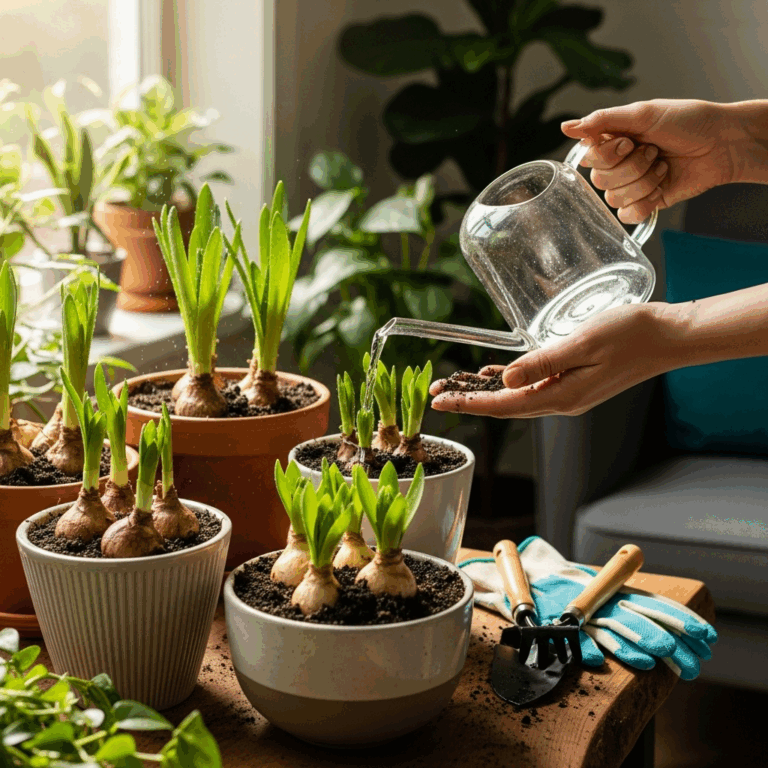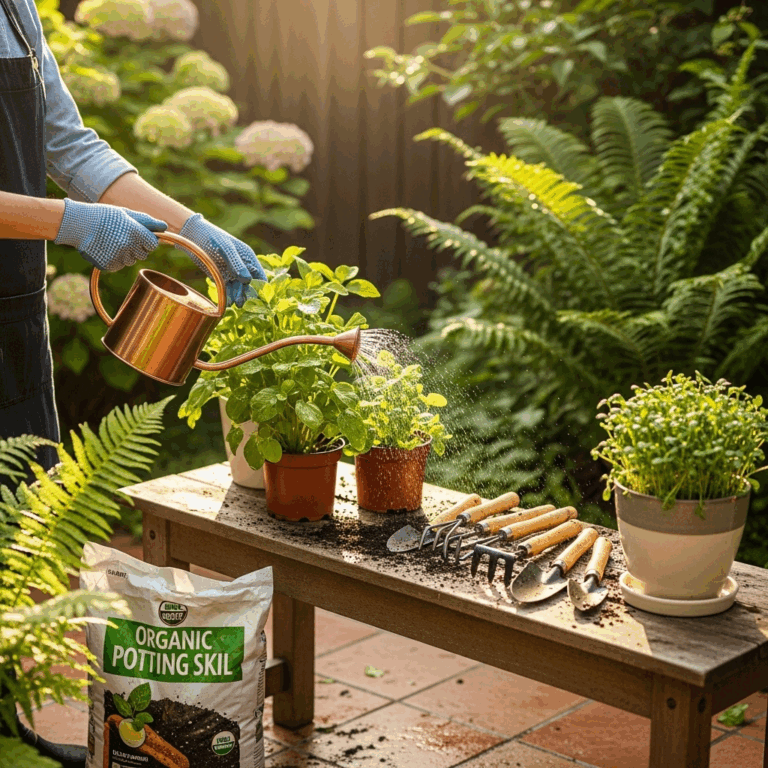Best indoor ivy plants are easy to grow, air-purifying, and add lush greenery to any space. These low-maintenance beauties thrive with simple care, making them perfect for beginners. Discover the top varieties and essential secrets to keep your ivy vibrant and healthy for years to come.
Best Indoor Ivy Plants: Essential Care Secrets for Thriving Greenery
Dreaming of a home filled with lush, cascading greenery that purifies your air and adds a touch of natural elegance? Indoor ivy plants are a fantastic choice, but sometimes they can be a bit fussy, leaving beginners feeling unsure. Worry not! With a few simple secrets, you can transform those wilting leaves into a vibrant, flourishing display. This guide will walk you through everything you need to know to pick the perfect ivy and care for it like a pro.
We’ll explore the most popular and forgiving indoor ivy varieties, demystify their light and watering needs, and troubleshoot common issues. Get ready to bring the beauty of living vines into your home with ease. Let’s dive in and unlock the secrets to happy, healthy indoor ivy!
Why Choose Indoor Ivy Plants?
Ivy plants offer a unique blend of beauty and practicality that makes them a favorite for indoor gardeners. Their trailing vines can soften shelves, climb up trellises, or cascade from hanging baskets, adding a dynamic, living element to your decor. Beyond their aesthetic appeal, many ivy varieties are renowned for their air-purifying qualities.
Scientific studies, like those from NASA’s Clean Air Study, have identified certain plants, including ivy, as effective at removing common household toxins from the air. This means your beautiful green friend is also working hard to create a healthier environment for you and your family. They are incredibly forgiving and adaptable, making them ideal for those new to plant care or those with busy lifestyles. Plus, their ability to thrive in various light conditions means there’s likely an ivy that will suit almost any spot in your home.
Top Picks: The Best Indoor Ivy Plants for Beginners
When it comes to indoor gardening, choosing the right plant makes all the difference. For ivy lovers, several varieties stand out for their resilience and stunning looks. Here are some of the best indoor ivy plants that are perfect for beginners:
1. English Ivy (Hedera helix)
The classic choice, English Ivy is famous for its deep green, lobed leaves and vigorous trailing habit. It’s incredibly versatile and can adapt to a wide range of conditions.
- Appearance: Heart-shaped or three to five-lobed leaves, often with lighter green or white variegation.
- Growth: Fast-growing vine that can trail several feet.
- Best For: Hanging baskets, covering shelves, or creating a green screen.
2. Devil’s Ivy / Pothos (Epipremnum aureum)
Often mistaken for ivy due to its similar trailing growth, Golden Pothos is technically not an ivy, but its care and aesthetic are very alike. It’s incredibly drought-tolerant and forgiving of neglect, making it a top choice for beginners.
- Appearance: Heart-shaped leaves often splashed with yellow or creamy white variegation. Cultivars like ‘Marble Queen’ and ‘Golden’ are popular.
- Growth: Can grow very long vines, making it excellent for cascading.
- Best For: Virtually any indoor space, from low-light corners to bright windowsills.
3. Swedish Ivy (Plectranthus verticillatus)
Despite its name, Swedish Ivy is not a true ivy. This plant boasts small, scalloped, deep green leaves on trailing stems. It’s a relatively fast grower and produces small, fragrant flowers in favorable conditions.
- Appearance: Rounded, scalloped leaves with a slightly fuzzy texture.
- Growth: Produces readily branching, trailing stems.
- Best For: Hanging baskets and containers where its cascading nature can be showcased.
4. Grape Ivy (Cissus rhombifolia)
This plant is named for its resemblance to small grape leaves. It has compound leaves with a slight texture and a graceful, cascading growth habit. It’s a bit more delicate than some other “ivies” but still manageable.
- Appearance: Three-leaflet compound leaves that are somewhat diamond-shaped and slightly fuzzy underneath.
- Growth: Slow to moderate trailing growth.
- Best For: Adding texture and an elegant vine to shelves or hanging displays.
Essential Care Secrets for Your Indoor Ivy
Understanding the basic needs of your ivy is key to its success. While these plants are known for being low-maintenance, providing the right conditions will ensure they truly thrive and reach their full potential. Let’s break down the essential care secrets:
Light Requirements: Finding the Sweet Spot
Most indoor ivy plants enjoy bright, indirect light. Direct sunlight, especially intense afternoon sun, can scorch their leaves. Too little light, however, can lead to leggy growth and reduced variegation in patterned varieties.
- Ideal: Place your ivy near an east-facing window where it will get gentle morning sun, or a few feet back from a south or west-facing window where the light is filtered.
- In Low Light: Many ivies, especially solid green varieties like classic English Ivy, can tolerate lower light conditions. However, they may grow slower, and variegated types might lose their patterns.
- Too Much Sun: Yellowing leaves or brown crispy spots are often signs of too much direct sun exposure. Move your plant to a shadier spot.
Watering Wisely: The Art of Not Too Much, Not Too Little
Overwatering is one of the most common pitfalls for indoor plants, and ivy is no exception. They prefer their soil to dry out slightly between waterings.
- How to Check: Stick your finger about an inch or two into the soil. If it feels dry, it’s time to water. If it feels moist, wait a few more days.
- Watering Technique: Water thoroughly until water drains from the bottom of the pot. Discard any excess water that collects in the saucer to prevent root rot.
- Seasonal Adjustments: Ivies generally need more water during their active growing season (spring and summer) and less during the fall and winter when growth slows down.
- Signs of Trouble: Yellowing leaves can indicate overwatering, while drooping or crispy leaves might signal underwatering.
Soil and Potting: A Foundation for Growth
A well-draining potting mix is crucial for preventing waterlogged roots. Ivies don’t like to sit in wet soil.
- Potting Mix: Use a good quality, peat-based potting mix. Adding perlite or coarse sand can further improve drainage.
- Pot Choice: Ensure the pot has drainage holes! Terracotta pots are excellent as they allow the soil to breathe and dry out more quickly.
- Repotting: Ivies generally like to be a little root-bound, so they don’t need frequent repotting – usually every 2-3 years. Repot when you see roots growing out of the drainage holes or the plant seems to dry out very quickly.
Temperature and Humidity: Creating a Comfortable Climate
These plants are quite adaptable to average household temperatures. They generally prefer temperatures between 65-70°F (18-21°C) during the day and slightly cooler at night. While they can tolerate lower humidity, they tend to do best when there’s a moderate amount of humidity.
- Ideal Range: Indoor temperatures between 50-75°F (10-24°C) are usually perfect.
- Boosting Humidity: If your home is very dry, especially in winter, you can increase humidity by:
- Misting the leaves occasionally.
- Placing the pot on a pebble tray filled with water (make sure the bottom of the pot isn’t submerged).
- Grouping plants together, as they release moisture through transpiration.
- Avoid: Keep ivies away from frosty windows, drafty vents, and sudden temperature fluctuations.
Fertilizing: A Little Boost for Lushness
During the growing season (spring and summer), feeding your ivy will encourage robust growth and vibrant foliage. In the fall and winter, reduce or stop fertilizing as the plant’s growth naturally slows.
- Frequency: Fertilize every 2-4 weeks during the growing season.
- Type of Fertilizer: Use a balanced, water-soluble houseplant fertilizer. Dilute it to half the strength recommended on the package to avoid burning the roots.
- When to Fertilize: Always water your plant before fertilizing to prevent root damage.
Propagation: Sharing the Green Love
One of the joys of growing ivy is how easy it is to propagate! This means you can easily create new plants from cuttings, perfect for sharing with friends or filling other spaces in your home.
Stem Cuttings Method:
- Take Cuttings: Using clean scissors or a knife, take a 4-6 inch cutting from a healthy stem. Make sure the cutting has at least two or three leaves and a node (where a leaf attaches to the stem).
- Prepare Cuttings: Remove the lower leaves from the cutting, leaving only the top two or three leaves on.
- Root in Water: Place the prepared cuttings in a jar or glass of water, ensuring the nodes are submerged. Change the water every few days to keep it fresh.
- Wait for Roots: Roots should appear within a few weeks. Once the roots are about an inch long, the cuttings are ready to be planted.
- Plant in Soil: Plant each cutting in its own small pot filled with moist, well-draining potting mix. Keep the soil consistently moist until the plant is established.
Alternatively, you can dip the cut end of the stem in rooting hormone (optional, but can speed up the process) and then plant it directly into moist potting mix. Keep the soil slightly damp and cover the pot with a plastic bag or cloche to maintain humidity until new growth appears.
Common Pests and Problems (and How to Solve Them!)
Even the most robust plants can encounter a few issues. Thankfully, most problems with indoor ivy are treatable. Early detection is key!
1. Drooping or Wilting Leaves
Cause: This is most often a sign of underwatering, but can also occur if the plant is severely overwatered and its roots are damaged.
Solution: Check the soil moisture. If dry, water thoroughly. If the soil is soggy, allow it to dry out completely and consider repotting if root rot is suspected.
2. Yellowing Leaves
Cause: Yellowing leaves can have a few causes:
- Overwatering: Often accompanied by mushy stems or leaves.
- Underwatering: Leaves may become dry and crispy before turning yellow.
- Nutrient Deficiency: Especially if the plant hasn’t been fertilized in a long time.
- Too Much Sun: Leaves might become pale yellow or bleached.
Solution: Assess your watering habits, adjust as needed. If under-fertilized, start a feeding schedule. If in too much sun, move to a shadier spot.
3. Brown, Crispy Leaf Edges
Cause: This usually indicates low humidity or inconsistent watering. It can also be a reaction to salt buildup from tap water or over-fertilizing.
Solution: Increase humidity around the plant. Ensure you are watering evenly. Flush the soil occasionally by watering thoroughly and letting excess water drain completely to remove mineral buildup.
4. Pests: Spider Mites, Aphids, Mealybugs
Cause: These common houseplant pests can infest ivy, especially in dry conditions. Spider mites create fine webbing, aphids cluster on new growth, and mealybugs look like small white cottony masses.
Solution:
- For minor infestations: Wipe leaves with a damp cloth or spray with insecticidal soap or neem oil. Repeat every few days until the pests are gone.
- For severe infestations: Isolate the plant and treat more aggressively with neem oil or horticultural oil.
- Prevention: Keep plants healthy and maintain adequate humidity to deter pests.
Troubleshooting Table: Quick Fixes for Common Ivy Woes
Here’s a quick reference to help you diagnose and solve common issues with your indoor ivy plants:
| Symptom | Possible Causes | Solutions |
|---|---|---|
| Yellowing Leaves | Overwatering, Underwatering, Lack of Nutrients, Too Much Sun | Adjust watering, Fertilize, Move to shadier location |
| Drooping Leaves | Underwatering, Overwatering (root rot) | Check soil moisture, Water if dry, Allow to dry if soggy, Repot if necessary |
| Brown, Crispy Edges | Low Humidity, Inconsistent Watering, Salt/Mineral Buildup | Increase humidity, Water evenly, Flush soil |
| Leggy Growth (Long Stems, Few Leaves) | Insufficient Light | Move to a brighter location with indirect light |
| No New Growth | Dormancy (Winter), Lack of Nutrients, Overcrowded Pot | Reduce watering/fertilizing in winter, Fertilize in spring/summer, Repot if root-bound |
| Spider Mites (Fine Webbing, Stippling on Leaves) | Dry Environment | Increase humidity, Wash leaves, Use neem oil or insecticidal soap |
| Mealybugs (White, Cottony Masses) | Poor Air Circulation, Dry Conditions | Wipe with alcohol-dipped cotton swab, Use neem oil or insecticidal soap |
Incorporating Ivies into Your Home: Design Tips
Beyond their care, consider how you can best display your indoor ivy plants to maximize their visual impact. Their trailing nature offers endless decorating possibilities.
- Hanging Baskets: A classic for a reason! Hang them in corners, near windows, or above furniture to allow the vines to cascade gracefully.
- Shelving Units: Let the vines spill over the edges of bookshelves or wall-mounted shelves for a lush, layered look.
- Trellises and Supports: Encourage your ivy to climb by providing a decorative trellis, moss pole, or even by training it up furniture legs.
- Create a Green Wall: With multiple plants and supports, you can create a stunning living tapestry on a wall.
- Mix with Other Plants: Combine ivies with upright plants for a visually dynamic arrangement in a larger pot or planter.
For those interested in maintaining a healthy indoor environment, incorporating air-purifying plants like ivy is a natural step. The U.S. Environmental Protection Agency (EPA) offers insights into how plants can contribute to better indoor air quality, reinforcing the benefits of greenery in our homes.
Frequently Asked Questions (FAQ)
Q1: How often should I water my indoor ivy plant?
Water when the top inch or two of soil feels dry to the touch. This usually means watering every 1-2 weeks, but adjust based on your home’s humidity, light levels, and the season. Always ensure the pot has drainage.
Q2: Can ivy plants tolerate low light conditions?
Yes, many ivy varieties, especially solid green ones like classic English Ivy, can tolerate low light. However, they will grow more slowly, and variegated varieties may lose their distinct patterns. They thrive best in bright, indirect light.
Q3: Why are my ivy’s leaves turning yellow?
Yellow leaves are often a sign of overwatering. Check the soil moisture. If it’s constantly wet, reduce watering and ensure good drainage. Other causes include underwatering, lack of nutrients, or too much direct sunlight.
Q4: How do I make my ivy bushier?
To encourage a bushier growth habit, prune the long, trailing stems regularly. You can cut back stems by about a third, just above a leaf node. This will stimulate new growth from that point, making the plant fuller. You can also propagate the cuttings to create new plants.
Q5: My ivy has brown, crispy leaf edges. What’s wrong?
Brown, crispy leaf edges are typically caused by low humidity or inconsistent watering. Try increasing the humidity by misting



